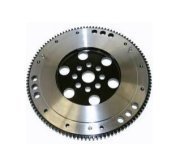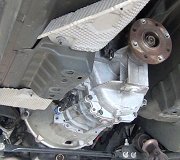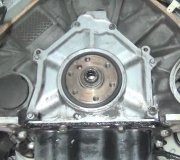The dual mass flywheel is a different part than the pressure plate.
Think of the clutch as a sandwich.
One piece of bread is the pressure plate.
The meat in the middle is the clutch disc.
The other piece of bread is the flywheel.
The flywheel attaches to the engine crankshaft.
The pressure plate bolts to the ring of the flywheel and both of those rotate at engine speed.
The clutch disc is between them and attaches to the input shaft on the transmission.
When you push in on the clutch the throw-out bearing pushes on fingers and the pressure plate releases the clamping pressure on the clutch disc. That is what allows you to shift.
Now in many newer cars they are trying to eliminate vibration and noise so they took the common flywheel, which for one hundred years was a solid chunk of iron or steel and butchered it to create the "Dual Mass Flywheel" As its name implies it has two main parts. There is an outer section that attaches to the engine crankshaft and it is joined to an inner section that the clutch disc contacts. The connection is made in various ways but most use a central bearing, some alignment parts, springs and rubber to absorb the minor tremors that the smaller engines create.
When they fail the inner section becomes loose and the pressure plate no longer can hold the clutch disc securely. What you end up with in the end is burnt clutch disc and needing to replace all three sections of the clutch.
Now you can end up with that same issue with a conventional clutch, but I have seen drivers using the old clutch designs go over 100,000 U.S. miles without a problem. While it seems the dual mass units do not last for even half that time even if they are not abused.
Plus with the old units you could turn the flywheel on a grinder/lathe to resurface them, replace the disc and pressure plate (which could also be resurfaced most of the time) and your good to go.
On a dual mass failure you replace all three and sometimes more depending on how it failed.
https://www.youtube.com/watch?v=-ZtReGJf2p4 Shows an animation about how they are put together.
https://www.youtube.com/watch?v=tfCwkAbKtzI Is a scientific explanation of the DMF.
https://www.youtube.com/watch?v=b08UA-c0cuc Shows how the clutch itself operates.
Thursday, September 14th, 2017 AT 2:56 AM



